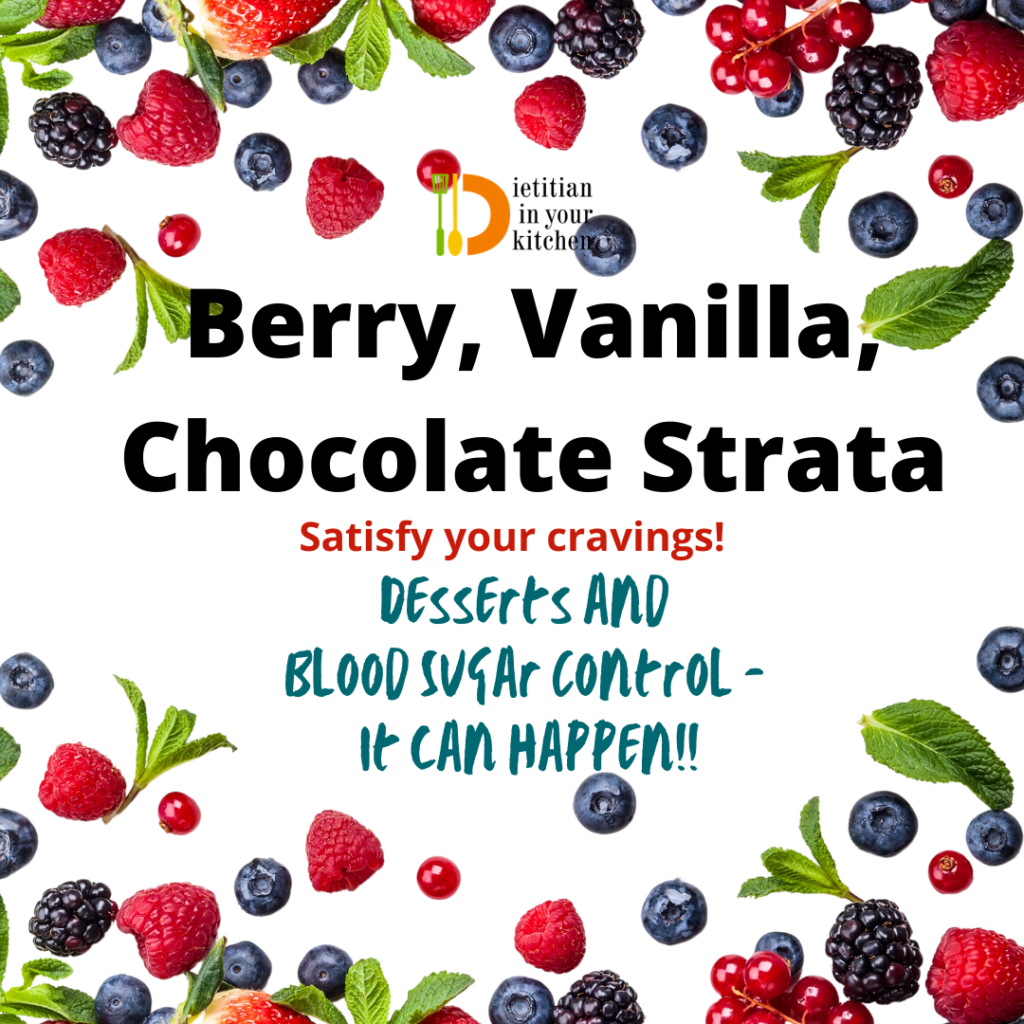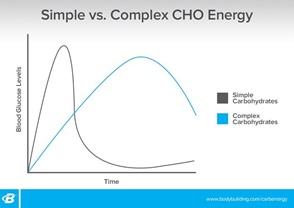Desserts & Blood Sugar Control?
June 1, 2021
Have you ever craved that sweet treat after eating, but are concerned about maintaining a normal blood sugar? No worries! You CAN!

People living with diabetes focus on carbohydrates, and rightly so! Unfortunately the advice readily available encourages everyone to avoid carbohydrates. Mostly because carbohydrates are the macronutrients that cause blood sugars to raise and sometimes even spike.
Not All Carbs Are Created Equal…
Let’s take a closer look!! Have you heard of the two different forms of carbohydrates: simple and complex? Maybe… And if so, what’s the difference?
Simple Carbohydrates are the carbohydrates that cause a quick spike in blood sugar levels, then a quick drop if not paired with any other food. Simple carbohydrates are fructose (fruits), glucose (table sugars), and lactose (milk sugars). These forms of carbohydrates would be helpful when trying to quickly bring up blood sugar levels.
Complex Carbohydrates on the other hand, do not cause as quick of a spike in blood sugars. These carbohydrates take longer to increase levels of blood sugar and the decline in levels is also more gradual. When eating complex carbohydrates, you will feel full longer than if eating simple carbohydrates. Complex carbohydrates are found in grains, breads, pastas, beans, and vegetables. If eating whole grains, beans or vegetables, these complex carbohydrates are also high in fiber.

FIBER
Fiber is “roughage” and is indigestible. There are many benefits to consuming fiber in the diet.
Think of fiber like a sponge. Fiber will soak up water and any vitamins, minerals, carbohydrates, etc. as this “sponge” is moving through your body. Since this “sponge” is soaking up the contents of the food you eat, the contents will be moving slower through your digestive system. When fiber gets to the intestines, it moves slower ensuring the nutrients are being absorbed at proper speeds. BONUS: Fiber is also cleansing the intestines as it travels through them.
While eating high fiber foods takes some getting used to, It’s great for minimizing the spikes and drops of our blood sugar response. Thus, why consuming carbohydrates isn’t such a bad thing. You will find fiber in these carbohydrate focused foods: fruits, vegetables, legumes/beans and whole grain foods such as breads, cereals, pasta, brown rice, and popcorn.
Let’s talk about non-nutritive sweeteners (zero-calorie sweeteners).
Non-nutritive or zero-calorie sweeteners do not significantly affect blood sugars as they have little to no calories. Learn more about all the different types of sweeteners from table sugar to Splenda from the USDA – Click Here
Not all of the non-nutritive sweeteners are capable of being used when baking. For baking, the best choices are sucralose (Splenda) and stevia (Truvia).
If carbohydrates cause a spike in blood sugar levels, what can be done to keep these levels steady?
Think about it. If carbohydrates are digested quickly, what could be added to a meal or snack to help slow the drop? Proteins and fats! Proteins take longer to digest than carbohydrates, and fats takes even longer to digest than proteins. Longer digestion times assists with maintaining a stable blood sugar level. And have an added bonus to help you feel full longer!

How to control your blood sugar and have your dessert too…
Check out Dietitian In Your Kitchen’s latest video on how to make a Berry, Vanilla, Chocolate Strata dessert.
The strata created in this video would be a great sweet treat directly after a well-balanced meal or snack. Why directly you ask? After eating a well-balanced snack or meal, the other macronutrients (proteins and fats) will assist with stabilizing blood sugars. If the strata, or any sweet treat, was consumed without a balanced meal or snack prior, one would see that spike and drop in blood sugars because there was not any significant protein or fat present to keep the blood sugar from dropping rapidly.
In the video the berries (blueberry, strawberry, and blackberry) are simple carbohydrates as well as the sugars in the milk used. Though, milk is also a product that has higher protein content, which helps sustain a steady blood sugar level, also.
Here’s the recipe if you’d like to try it out!!
For assistance with your personal blood sugar control, consider working with our dietitians.
Schedule a discovery call now! Click Here
Post Contributor: Megan Chafin, Dietetic Intern, Marshall University Distance Dietetic Internship
Subscribe to our newsletter
Get seasonal recipes, new trends in food and fitness, and dietitian jokes. There’s no spam, and you can unsubscribe at any time.
One Comment
Leave A Comment Cancel reply
You must be logged in to post a comment.

[…] Blood sugar control, for example is something physiological that has nothing to do with willpower. Find out more about those physical changes in the blog “Desserts & Blood Sugar Control”. […]